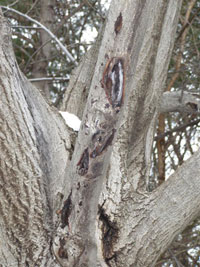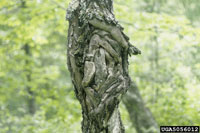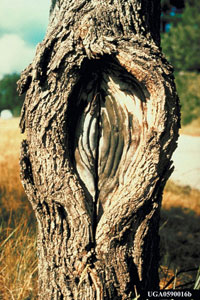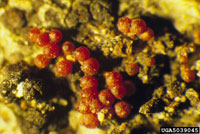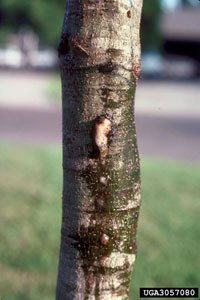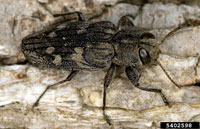Extension > Garden > Diagnose a problem > What's wrong with my plant? > Deciduous Trees > Butternut > Dead branches or branch dieback
Butternut > Trunk/Branches > Dead branches or branch dieback
1 of 3
Butternut canker
Sirococcus clavigignenti-juglandacearum
- Crown dieback that expands each year can be seen from a distance
- Cankers appear as multiple cracks in bark along trunk and branches
- Older cankers open into a barkless oval with ridges of wound wood on the edges
- Wood is stained dark brown to black underneath cankers
- Cankers quickly kill twigs and small branches while trunk cankers grow for several years
- Sprouts may form below cankers
- After several years, trees die
- Common on butternut, very rare on black walnut
- More information on Butternut canker
2 of 3
Perennial nectria canker
Neonectria ditissima
- Early canker symptoms are small and difficult to see, usually forming a darkened, depressed area beneath smooth, young bark
- Sunken round to oval cankers with target shaped ridges of barkless wood on large branches or main trunk
- Red to reddish orange raised cushion like bumps can occasionally be seen on the edge of the canker
- Dead branches and twigs killed by girdling cankers
- More information on Perennial nectria canker
3 of 3
Flat headed apple tree borer
Chrysobothris femorata
- Older tunnels cause cracks in bark, froth oozes from openings
- Infested areas of tree show sunken, darkened areas of bark
- Larvae tunnel under bark of large branches and trunk
- Can cause dieback or entire tree can be killed, especially young trees
- Larvae is yellow with no legs
- Adult is ¼ to ½ inch long, flattened beetle, ranging from metallic brown to dull gray
- More information on Flat-headed apple tree borer




